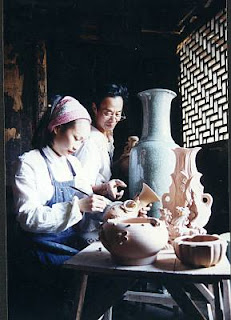The unique water quality and mild climate of Jing County
in Anhui Province
in eastern China
Inscribed in 2009 (4.COM) on the Representative List
of the Intangible Cultural Heritage of Humanity
© Text UNESCO, Images: Huang Feisong


